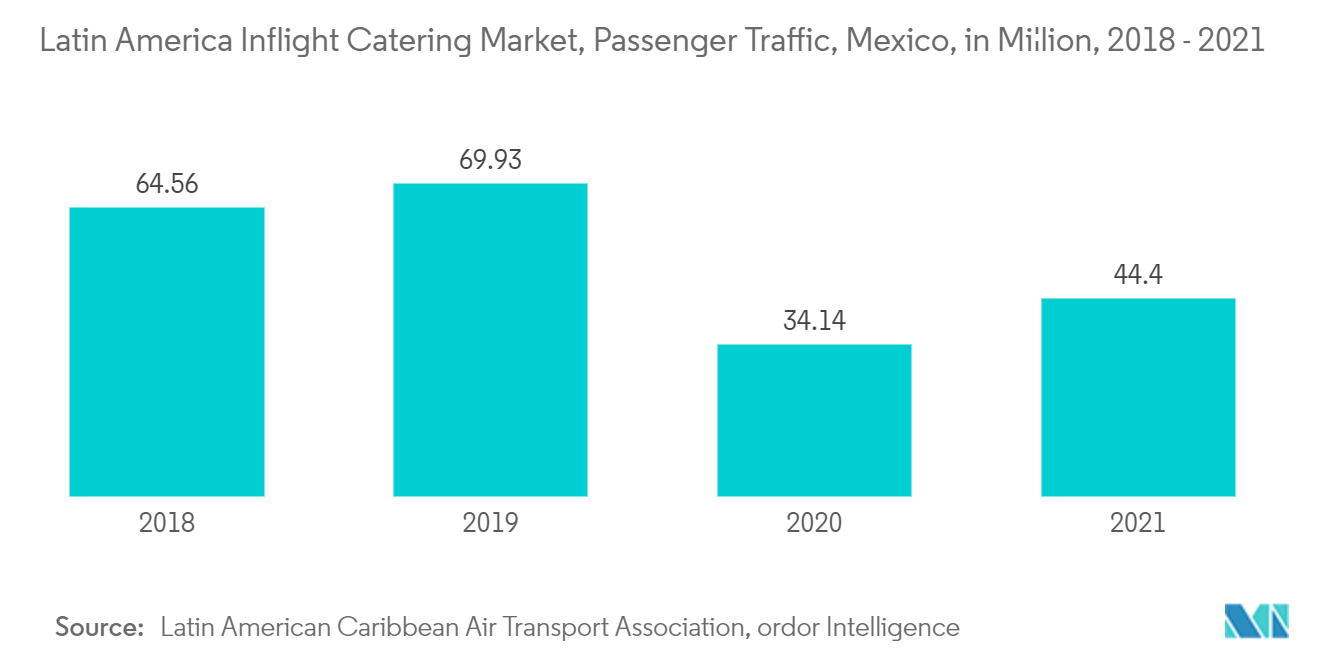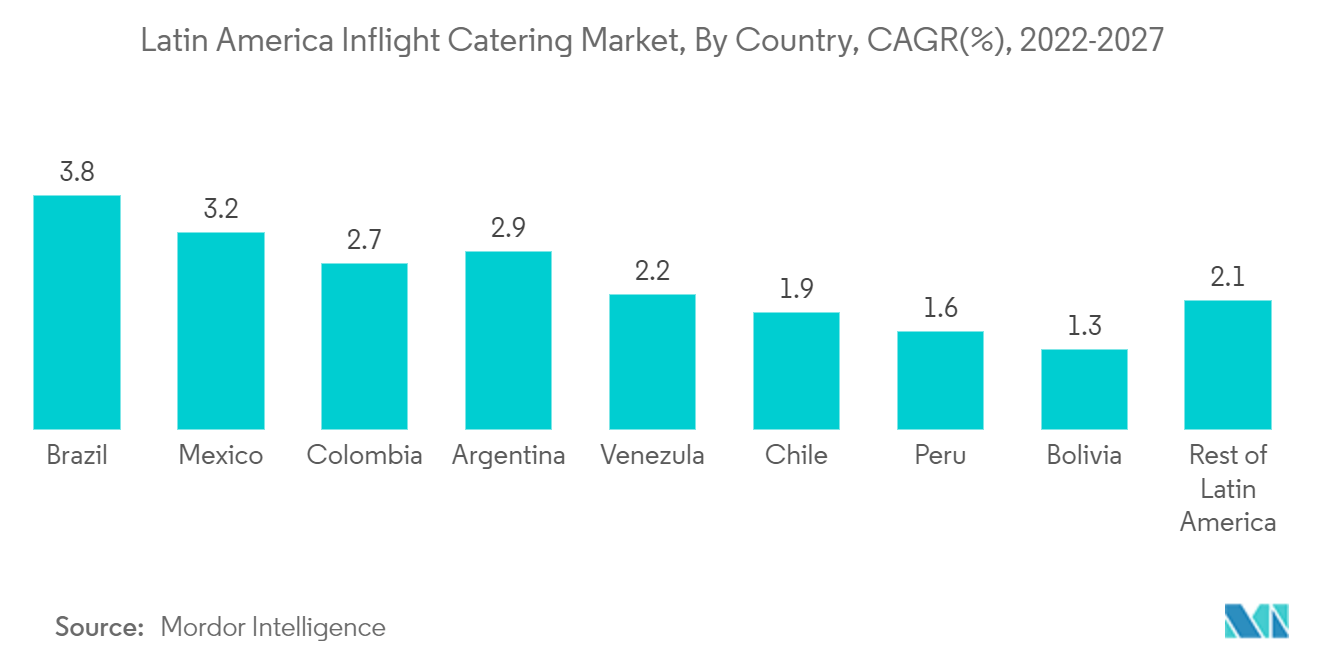Market Trends of Latin America Inflight Catering Industry
This section covers the major market trends shaping the Latin America Inflight Catering Market according to our research experts:
Revival in the Passenger Traffic and Growing Aircraft Fleet is Likely to Bolster Demand
An increased number of aircraft deliveries and an increase in the number of passenger traffic are expected to be the main factors that will propel the growth of the market in the coming years. In 2021, around 19.8 million air passengers traveled with LATAM Airlines in Brazil. This country represents the airline's largest segment, surpassing almost 50% of the number of passengers transported in its other domestic markets. In the past, airlines in Latin America, such as Colombia's SCADTA (now Avianca) and Brazil's VARIG, have expanded their routes with Boeing aircraft. The growing aviation industry in Latin America has increased the need for new aircraft in the country. According to Airbus' predictions, there will be deliveries of 2,550 new aircraft in the Latin American region between 2022 and 2041. The new deliveries will lead to commercial airlines operating within Latin America witnessing significant growth in their fleet size. This will lead to an increase from the current 1450 aircraft, which are present in Latin America to 2850 aircraft in the coming years.
Latin America is second to last in terms of projected deliveries for the next two decades, only above Africa, which expects to have 1,230 deliveries and 370 aircraft conversions. In Latin America, around 81% of the fleet consists of narrowbody aircraft. Airbus predicts that 92% of deliveries will consist of narrowbody aircraft. Moreover, narrow-body aircraft have gained more popularity in the Latin American aviation industry owing to the rise of low-cost carriers that deploy such aircraft to drive efficiencies and stimulate traffic. The increase in air traffic and the delivery of all types of commercial aircraft will drive the market in the coming year.

Brazil to Dominate the Latin America Market During the Forecast Period
The Brazilian aviation industry gradually recovered from the impact of the COVID-19 pandemic in 2020. According to the National Civil Aviation Agency (ANAC), in 2021, domestic passenger traffic accounted for about 62.5 million, witnessing an increase of 20.4% compared to 2020. As a result of restrictions on Brazilian travelers, international passenger traffic is still growing at a slower pace in the country.
LATAM Brasil, GOL Airlines, and Azul Airlines are the major airlines in the country in terms of passenger traffic during 2020-2021. The airlines still reported 70-80% of pre-pandemic level operations in the fourth quarter of 2020, despite the severe impact of COVID-19. As the market is recovering, airlines are reintroducing domestic and international routes.
LATAM Brasil is the flag carrier of Brazil, which operates a fleet of 129 aircraft including a narrow-body fleet of the A320 family of aircraft and wide-body aircraft of Boeing 767, Boeing 777, and Boeing 787 aircraft. The airline also has 6 aircraft on order.
In April 2021, LATAM Airlines awarded a contract to LSG Sky Chefs for its domestic business in Brazil. The agreement will allow the catering company to provide services to carriers at São Paulo (GRU) and Fortaleza (FOR) for additional three years and expand the partnership of airlines in São Paulo (CGH) and Rio de Janeiro (GIG and SDU). Under the agreement, LSG catered to an average of 140 flights per day for the airline in 2021 and additional slots planned for 2022.
GOL Airlines is a low-cost airline in Brazil that has a narrow-body aircraft fleet of 138 Boeing 737 family aircraft, with an order for 101 units. The business aviation industry in the country has steadily grown over the past few years. Business jet operations witnessed growth in 2021. This strong demand for business aviation for business and leisure travel is expected to propel the growth of inflight catering in the country.


